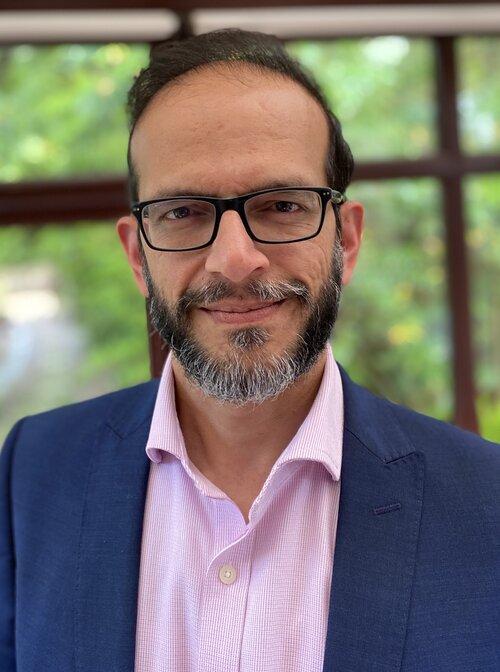Is tobacco harm reduction reaching the Global South?
By Pieter Vorster and Sudhanshu Patwardhan
Eighty percent of the current users of risky tobacco products live in the “Global South,” the geopolitical clubbing of low-income and middle-income countries (LMICs) that includes not only Southern Hemisphere nations such as Fiji but also nations that are firmly in the Northern Hemisphere, geographically, like China, India, Russia and Bhutan, along with countries that straddle both segments, such as Uganda.
A world free of smoked and smokeless forms of risky tobacco products such as cigarettes, bidis, gutkha, mishri, zarda and toombak can prevent a billion premature deaths this century. This can potentially reduce the social, economic and health inequity within and between countries, thus delivering on many U.N. Sustainable Development Goals and taking a step closer to the World Health Organization’s “health for all” ambition. Do manufacturers of tobacco products, as well as businesses delivering cessation products and services, have a role in this?
Sudhanshu Patwardhan is a medical doctor, nicotine expert and health tech entrepreneur. Pieter Vorster is managing director of Idwala Research, a consultancy aiming to accelerate global tobacco transformation and harm reduction. Both have roots in the Global South and are motivated by the goal of reducing the harms from tobacco, as seen in the Global North. Below, they discuss the challenges and opportunities related to global health equity in a freewheeling dialogue, interchangeably playing the role of interviewer, respondent, expert and devil’s advocate.
Background
In June 2023, at the Global Forum on Nicotine in Warsaw, Sudhanshu Patwardhan convened and chaired a workshop of international experts representing diverse stakeholder groups—tobacco control, industry and management consulting. The session was titled “Tobacco Industry Transformation—Is It Really Reaching LMICs?” The panel and the audience, including Pieter Vorster, brought deep and wide expertise in public health, consumer advocacy, regulatory affairs, nicotine supply chains and capital markets. As the first anniversary of the session approaches, it is timely to discuss the developments that have occurred since and what needs to be done going forward to achieve a world free from risky tobacco products.
Pieter Vorster: Sud, let us summarize the session before we leap forward into what has happened since and what is next. So, in the workshop, you brought up the role of a range of stakeholders in the ecosystem: regulators, industry, consumers and healthcare professionals, to name a few. What are the regulatory challenges in the Global South that significantly impact tobacco cessation and prevention of initiation?
Sudhanshu Patwardhan: Pieter, smoked and smokeless forms of risky tobacco products are a leading cause of noncommunicable diseases (NCDs) globally and increasingly in the Global South. However, when it comes to tobacco control, there is a serious regulatory capacity gap in the Global South. Most of these countries are still developing locally relevant systems and policies that can best meet their populations’ needs for healthier, happier and longer lives. All these countries are going through a dramatic epidemiological shift—with NCDs overtaking infectious diseases as a leading cause of disease and death. Most of these countries are signatories to the WHO’s Framework Convention on Tobacco Control [FCTC], but the implementation of the FCTC articles is still very selective. For example, most emphasis is on taxation (a proven tool for reducing demand and increasing treasury earnings), advertising restrictions, and campaigns for public awareness and prevention of initiation. Although this is having an impact, progress has been slow. The principle of harm reduction, although explicitly stated as a component of tobacco control in Article 1(d) of the FCTC, has largely been ignored by the WHO to the extent that its guidance on tobacco policy favors a prohibitionist approach toward safer nicotine alternatives and that is being adopted by many countries in the Global South that look to the WHO for leadership on health policy.
Vorster: Please explain how that is also a regulatory issue.
Patwardhan: This came up during our workshop. The tobacco industry is innovating into “reduced-risk products” at a breakneck speed, catching up with product innovation from outside the industry (e.g., e-cigarettes) or launching products they have developed through years of R&D (e.g., nicotine pouches and heated-but-not-burned tobacco products). Their ability to launch these products is stymied by local prohibitions in many countries globally. If regulated strictly enough and marketed only to current tobacco users, these products have the potential to reduce tobacco-related harms significantly. Evidence from the U.K., Japan and Sweden is a case in point.
In an interlinked issue, there is hardly any capacity built for tobacco cessation in the Global South. Most of the pharmaceutical industry or health tech entrepreneurs there are equally unenthused about innovation into tobacco cessation and the massive public health opportunity. They fail to recognize the financial dividend by serving the “base of the pyramid.” So, effectively, nearly a billion people in the Global South—current tobacco users—are consigned to struggle by themselves in their attempts to quit, and most fail.
An important aspect of “demand reduction” in tobacco control, i.e., enabling access to appealing nicotine-replacement products that can enable and sustain cessation among current adult tobacco users, is therefore not available in most of the Global South.
Vorster: So, bans on newer “safer” nicotine alternatives in many countries are causing a strange situation: Risky forms of tobacco are still available everywhere, legally, while reduced-risk products are not? One would have thought that the science underpinning the tobacco harm reduction principle is universal. If it is clearly understood by U.K. policymakers and enshrined in the U.S. Food and Drug Administration’s “modified-risk tobacco product” authorization, why is it not accepted in the Global South?
Patwardhan: It is important to bear in mind that sound policymaking and regulations cannot be a simple copy-paste from the Global North. Yes, global good practices can be adapted—but there is no substitute for local science to ensure relevance and sustainability. Local research capacity not only helps build the scientific evidence base but also helps society interpret it objectively. That is currently missing in most of the Global South. A glaring example is from my recent attendance at the biannual global meeting of the Society for Research in Nicotine and Tobacco, held in Edinburgh. Out of the over 1,000 delegates there, in my estimation, less than 5 percent of those attending were working on the ground in tobacco cessation and harm reduction in the Global South. The fact that these conferences happen mainly in Europe and the USA also points to systemic bias in funding and research, all skewed to the affluent Western nations. Even conventional tobacco cessation treatments are hardly, if at all, studied and available in the Global South.
Vorster: Do you mean nicotine-replacement therapy products (NRT)?
Patwardhan: Yes, that’s a good example. NRT are on the model essential medicines list of the WHO for tobacco dependence treatment. They have also made it to the National Essential Medicines lists of member countries. But the reality on the ground is vastly different and quite frustrating. Little or no local research data on the use of NRT for tobacco dependence treatment exist in most of the Global South. NRT gums, patches and lozenges are much costlier than the tobacco products they are meant to replace during a quit attempt. They are either available at limited points of sale or not at all, and healthcare practitioners are not equipped to advise patients on using these products.
Vorster: You often talk about nicotine misperceptions among healthcare professionals, and you led the first published research study on this topic in 2013. More recently, the Foundation for a Smoke-Free World-funded SERMO study of over 15,000 doctors from 11 countries also showed that of those interviewed, over 70 percent believed (wrongly) that nicotine in tobacco products causes cancer. How does that impact cessation?
Patwardhan: From personal experience interacting with numerous frontline clinicians worldwide over the years, I can see how nicotine misperceptions influence their advice to tobacco-user patients. Smoked tobacco and most smokeless tobacco products are harmful due to a wide range of chemicals, including carcinogens, either produced during combustion or added during manufacturing. Nicotine is not a carcinogen; it is, however, the dependence-causing chemical in tobacco products for sure! The misperception about nicotine regarding cancer is a likely cause of hesitance among clinicians to recommend adequate NRT treatment for long enough, alongside behavioral counseling. Cravings for nicotine and withdrawal symptoms can last from weeks to months. Not supporting the quit attempt with adequate dosing of clean forms of nicotine (e.g., NRT) for long enough is very likely to lead to a failed quit attempt or relapse. Countries such as the U.K. have strong regulatory expertise in tobacco control and expertise in nicotine science and have therefore embraced a tobacco harm reduction indication for NRT—i.e., deemed it safer for smokers to consume NRT as long as necessary, for quitting smoking altogether and to prevent relapse.
Vorster: You make the role of regulators in tobacco cessation loud and clear. What about the industry?
Patwardhan: The industry is not a monolith. Nor is it just the tobacco industry we are talking about here. The nicotine supply chain has never been so exciting! A significant proportion of the world’s pharmaceutical-grade nicotine comes from companies extracting nicotine from tobacco in India. Many of those companies also supply the increasing demand for nicotine for e-cigarettes and nicotine pouches. Then there is synthetic nicotine, made to pharmaceutical standards, also poised to disrupt the supply chain and potentially free up thousands of hectares of arable land to address food security issues. Some of the large multinational tobacco companies have invested in medically licensed NRT, e.g., BAT and Philip Morris International, blurring the lines between tobacco and NRT companies, potentially expanding the choices available for enabling quit attempts among current tobacco users. However, given the history of the industry, any efforts by the tobacco industry to conduct tobacco cessation training among healthcare professionals would be viewed with suspicion and likely to evoke a reaction from those in public health. There is a clear role and an unmet need for independent organizations to take the lead on this in the interest of public health. Tobacco companies can better focus their resources on conducting locally relevant tobacco cessation and harm reduction research in the Global South. That could potentially better inform regulation and an understanding of harm reduction principles among key stakeholders.
Now, this is where I get to ask you questions! Given your deep expertise in the tobacco industry transformation process, what do you make of the tobacco companies’ innovation and launches in the context of the Global South?
Vorster: Although there have been valuable attempts to gauge overall industry transformation, notably the Tobacco Transformation Index, no independent research has been conducted that tracks transformation progress specifically in the Global South.
Having said that, there have been encouraging, albeit nascent, trends here. During the early years of reduced-risk tobacco product (RRP) launches, multinational tobacco companies focused on countries such as the U.S., Japan, Korea and Europe. More recently, companies like BAT have launched nicotine pouches in Kenya, Pakistan and South Africa and PMI in the Philippines, Pakistan and South Africa. Furthermore, PMI sells heated-tobacco products in a considerable number of Global South markets, including Indonesia in select cities, while BAT has a significant geographical footprint there with vaping products.
Apart from regulatory measures that prohibit the sale of RRPs in a substantial proportion of these countries, one of the most significant barriers to harm reduction is the cost of these products relative to cigarettes, which is a function of both low cigarette prices and excise tax and relatively high production costs for RRPs. For example, the PKR120 ($0.43) per can, at which BAT and PMI sell nicotine pouches in Pakistan to compete with low-end cigarette prices, is below current production costs of about $0.50 to $0.60 per can. For RRPs to make meaningful inroads in the Global South, it is imperative that costs are reduced significantly and the price differential with all forms of risky tobacco products available locally is decreased substantially. Within this context, it is significant that BAT (followed by PMI) chose to introduce nicotine pouches in Pakistan, which has the second-highest incidence of smokeless tobacco use in the world.
Patwardhan: Where do large national tobacco companies come into this?
Vorster: The transformation picture is markedly different beyond the listed multinational tobacco companies. Sadly, this is also where the majority of the world’s consumers of harmful tobacco products resides.
There exists clear potential for conflicts of interest where state monopolies control the tobacco industry, but these potential conflicts exist well beyond state ownership of tobacco companies through the tax revenues earned from tobacco products. For countries with a significant reliance on tobacco tax revenues, the WHO’s prohibitionist stance on nicotine consumer products has helped justify the banning of less risky forms of tobacco and nicotine.
In China, the government receives the equivalent of circa 10 percent of General Government Final Consumption Expenditure from tobacco taxes in addition to the substantial revenue it earns from its ownership of the CNTC [China National Tobacco Corp.]. It was, perhaps, no surprise that, in 2022, the burgeoning independent Chinese vape industry was brought under the purview of the State Tobacco Monopoly Administration, leading to its near collapse owing to significant regulatory restraints.
Indonesia is the second-largest cigarette market in the world after China, and whilst the tobacco industry is privately owned, the government receives some 13 percent of General Government Final Consumption Expenditure from tobacco taxes. RRPs are not banned in Indonesia, but with average cigarette prices around $1.50 per pack, they are not competitive and will likely only appeal to high-end consumers.
Patwardhan: From the looks of it, the odds are stacked against tobacco users in the Global South: knee-jerk regulation against safer nicotine products, a local versus multinational tobacco companies’ turf war, nicotine misperceptions among healthcare professionals and a lack of locally conducted scientific research in tobacco control and harm reduction. Conducting high-quality, independent research in tobacco control and harm reduction, which can be peer-reviewed and used to inform regulatory and clinical decisions, can change this situation for the better.
Vorster: Furthermore, despite initiatives such as the Tobacco Transformation Index that assess the overall shift in the industry, a considerable gap persists in independent research focused on monitoring transformation progress specifically in the Global South.
Patwardhan: Agreed. There is an urgent need for industry transformation, not just in products but also in organizational attitudes toward public health, research and social responsibility in the Global South. It is quite clear to me that the industry must prioritize public health outcomes alongside business interests. It was mentioned in our panel how crucial it is for companies to engage with communities transparently to foster an environment conducive to harm reduction. This includes investing in local communities, conducting local research to global standards and responsibly supporting educational campaigns that accurately inform adult consumers about the risks of consuming tobacco and the evidence-based aids available locally for quitting tobacco use.
Conclusion
Eliminating harm from tobacco products is a lofty social, public health, economic and political goal. It needs to be a global goal too. The rapid pace of innovation into safer nicotine alternatives for tobacco cessation is likely to be available and affordable only to the adult tobacco consumers in wealthier “Global North” nations in a well-regulated environment, and this threatens to worsen the inequity already imposed on current tobacco users of the Global South. The industries—not just tobacco but also pharmaceutical as well as new disruptive digital and health tech companies, have much to gain commercially by innovating in the Global South. There are nearly a billion current adult tobacco consumers there waiting for just that!











































